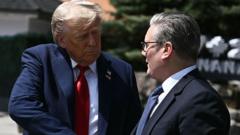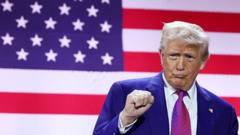This article explores the effects of China’s new trade strategies as tariffs by the U.S. lead to a surge in exports to diverse regions including Southeast Asia, Europe, and Latin America. The increasing trade surplus is reshaping worldwide economic structures and highlighting the resilience of Chinese manufacturing.
China's New Export Surge: A Global Economic Shift

China's New Export Surge: A Global Economic Shift
As U.S.-China trade tensions escalate, China is redirecting exports to new markets, significantly impacting global economic dynamics.
Two decades ago, China revolutionized global trade with its unmatched ability to produce and ship products at extraordinary speed and low costs, profoundly influencing the U.S. economy. Now, a fresh wave of China’s export prowess is once again making waves—this time across continents from Indonesia to Germany and Brazil.
With President Trump’s tariffs limiting access to the United States, China has redirected its goods, including toys, automotive products, and footwear, towards alternative markets. This strategic pivot is generating a staggering trade surplus of nearly $500 billion this year alone, which marks a more than 40 percent rise compared to the same timeframe last year, as reported by Leah Fahy, a China economist at Capital Economics.
The ongoing trade competition between the U.S. and China is triggering critical shifts in global economic patterns, prompting other countries to brace for the ramifications of a more dominant Chinese export sector. “China is filled with exportable goods regardless of U.S. tariffs, making it difficult to halt shifts in trade flows,” Fahy noted.
Moreover, China's production capabilities are burgeoning, with electric vehicle manufacturing experiencing a 45 percent increase this year compared to the last, positioning the country as a formidable player in the global automotive industry.
As this export boom creates ripples in economies worldwide, both competitors and collaborators will need to navigate the evolving landscape shaped by China's dynamic trade strategies.





















